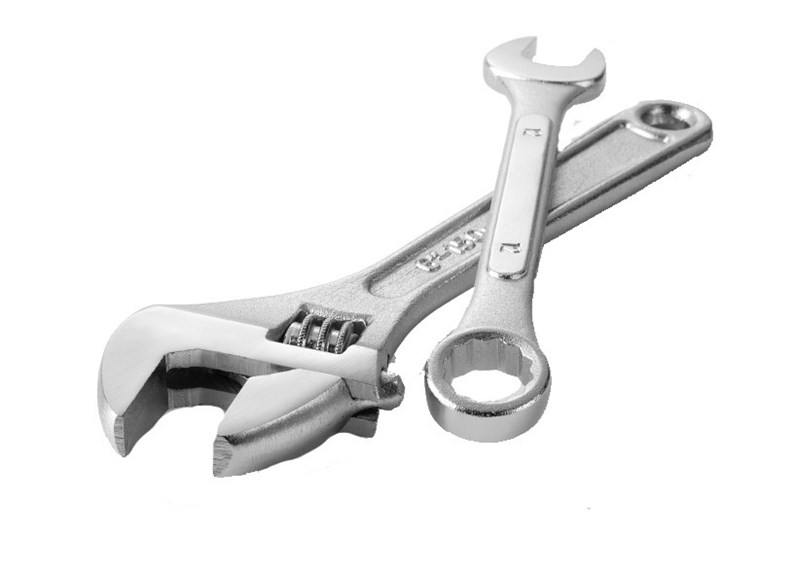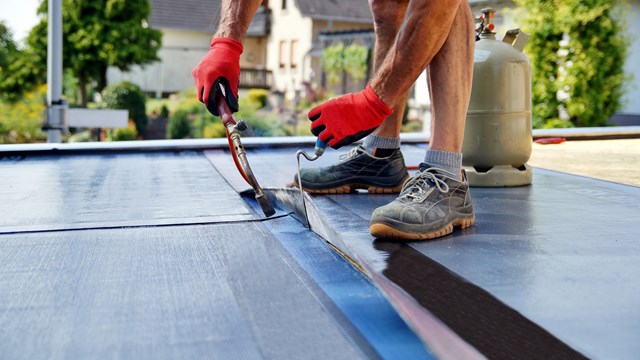Condominium communities and townhomes have meticulously landscaped grounds. It is only right that the exteriors be well maintained too. Maintaining the exterior of the building serves two purposes. First, just like an impeccable landscape, clean exterior surfaces provide a building with curb appeal, which has actually been proven to increase the buildings bottom line.
Second, by keeping the building's exterior clean, it reduces the chances that mold and water will seep into the building's interior walls and cause severe property damage. How, and how often, the exterior of the building is maintained will depend on which type of material the exterior has been made from.
The Best Choice
The most common exterior surfaces for condominiums and townhomes in the northeast are vinyl siding, brick and wood, or a combination of any of the three. "The estimate in our market is that 90 percent of our market is vinyl," said Mark Gluhosky, regional manager of Kamco Supply Corporation of New England. "Vinyl is the most predominate exterior surface in the northeast, but typically the side and the rear of a townhome and condominium building will be vinyl, but the front may have brick, stone or even wood."
According to Jeff Wilson, who has appeared in episodes on HGTV and the DIY Network and is currently the voice of the Best Practices series on www.HGTVPro.com, brick and stone are, hands down, the most durable exterior siding for a structure. "Installed correctly, there's no doubt that they handle the weather," says Wilson. "Of course, they cost appreciably more thantheir alternatives."
Next in line, according to siding experts, is vinyl siding—not only the most popular of sidings in the condominium and town home buildings, but also the best value of any exterior material.
"Vinyl is far and away the best value of any material," says Walt Hoyt, director of communications for Certainteed Siding Products Group in Valley Forge, Pennsylvania. "The color is built right in, it comes in panels and it's relatively easy to install."
Vinyl is made from a PVC (polyvinyl chloride) plastic. "It's highly durable and practically maintenance free," says Hoyt.
Gaining popularity on the market is fiber cement siding. "Fiber cement siding has been around a very long time," says Wilson. "Our grandparents would recognize it—it's the same stuff that they used to make with asbestos included in the mix, but no more. Today's fiber cement siding is easy to install (excepting its weight), it looks great, and usually comes with a 50-year-plus limited warranty. It's about half the cost of real wood, generally speaking, and holds paint better, so maintenance will be lower. It's not bothered by rot or insects either."
Today's fiber-cement siding is composed of cement, sand, and cellulose fiber that has been autoclaved (cured with pressurized steam) to increase its strength and dimensional stability. The fiber is added as reinforcement to prevent cracking.
Costs and Installation
"The main drawback of fiber-cement siding is that it's made partially of wood fibers that are difficult to come by," says Wilson. Fiber cement also has to be painted and, as a result, is more expensive than vinyl siding.
According to R.S. Means data and the Portland Cement Association, there are three factors affecting the overall cost of the siding product: the cost of materials, labor and paint or stain being applied. Of particular interest is comparing the total in-place, system price (including paint or stain) to other cladding systems. Fiber cement costs about 75 percent less than natural stone, 37 percent less than cedar, and 24 percent less than wood siding and slightly more than hardboard siding to install and finish on a new home.
"The main knock on vinyl, however, is from environmentalists, because of the manufacturing process of the PVC and its pollutants," says Gluhosky.
Regardless of whether the exterior is constructed with brick, stone, vinyl, fiber cement or wood, the experts agree that the most important part of exterior maintenance starts with the installation process.
"It's far more important that the siding is installed correctly, over a sound exterior building envelope," said Wilson. "All siding, even stone and brick, will inevitably allow water in behind it.As a result, it's so important that the outer building envelope is designed and installed to allow trapped water to escape; this is called a `drainage plane.' It's such a common misconception that siding will be protected from water intrusion.The damage that occurs from improperly designed and installed drainage planes runs from mold and mildew to rot and even to decreased energy efficiency, leading to increased costs over the life of the building."
Wood is also an absorbent material and as a result, the wood finish is the most important part of using this type of siding. "Most installers using wood are priming it and painting it to make sure it's more water resistant," says Gluhosky. "And compared to vinyl, wood siding is replaced more often than any, but paints are now mold resistant and have a fungicide in them to help ward off problems down the road."
"You must paint or prime the back side of the wood, because ultimately water will find it's way through the siding and the last thing you want to happen is to have the absorbency up against that layer," he also says.
Cleaning Up
Wilson says that any wood siding will need to be painted regularly, but many people don't know that they can extend the life of any paint/stain job by cleaning periodically between re-paintings.
"Just getting rid of the dirt, stains, mold, mildew, and algae [every couple of years] can make a paint job last many years longer than not cleaning between jobs."
According to the Brick Industry Association (BIA), brick never needs to be painted and never rots, fades, warps, burns, dents, tears or becomes brittle.
However, many of the problems with brick masonry are a direct result of improper cleaning methods. Some walls have been irreparably damaged as a result of a lack of attention to cleaning details and procedures. The BIA explains that there are three cleaning methods for new masonry depending on the type of brick used. These methods include bucket-and-brush hand cleaning, pressurized water cleaning, and sandblasting.
Bucket-and-brush cleaning is probably the most popular, yet most misunderstood of all the methods used for cleaning brick masonry. Its popularity is due to the simplicity of execution and the ready availability of proprietary cleaning compounds. The proper solution—proprietary compound, detergents or acid—needs to be used.
Brick can crack and may need grouting or filling, and brick can also absorb moisture. Plants may also grow alongside brick and push into crumbling masonry. At some point, bricks may need to be replaced.
The BIA recommends at minimum, a yearly inspection of the brick. Determine the source of any moisture issues before replacing or repairing, remove and replace torn, deteriorated, or inelastic sealants, remove ivy or other moisture plants.
The Vinyl Siding Institute (VSI) recommends protecting vinyl siding from discoloration by covering siding when using stains, sealants and wet concrete as part of any renovation projects. Insecticides and herbicides can also discolor vinyl siding and should be considered before using. If a panel is permanently stained or damaged, it is easily replaceable.
"The vinyl is pliable and you simply unlock the panel that's damaged and you simply replace it and lock it back in," says Hoyt.
According to Hoyt, replacing a fiber cement piece of siding is a little more difficult, but not that different compared to vinyl. "If you have to replace fiber cement siding, it's not as pliable, but you remove panel and do face nailing—nail through the bottom of the panel that's overlapping and it goes through the bottom of the panels and you do a little touch up paint, but it's relatively easy."
While fiber cement siding is a low maintenance product, it does require some care to maintain its appearance. Insect nests and accumulated dirt can easily be removed by power washing, and caulked joints should be inspected each year for gaps. A well maintained fiber cement siding product generally requires repainting only every seven to 15 years.
If you think about siding, Hoyt suggests thinking about beauty, performance and durability. "Homeowners want curb appeal and lasting product," he says. "Fiber cement you have to paint, but you get an absolutely gorgeous and customized look. There are arched trims that replicate the federal or traditional look and a variety of design options."
A thorough and regular inspection and maintenance of a building's exterior—no matter what siding is being used—can help to extend the life of the building.
Lisa Iannucci is a freelance writer living in Poughkeepsie, New York.







Leave a Comment